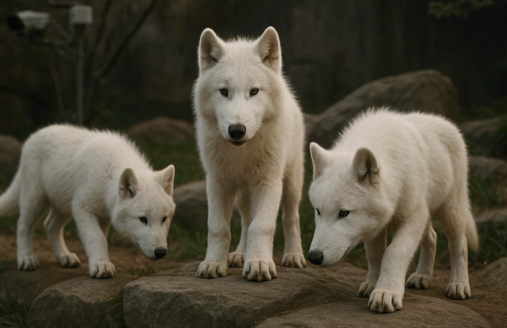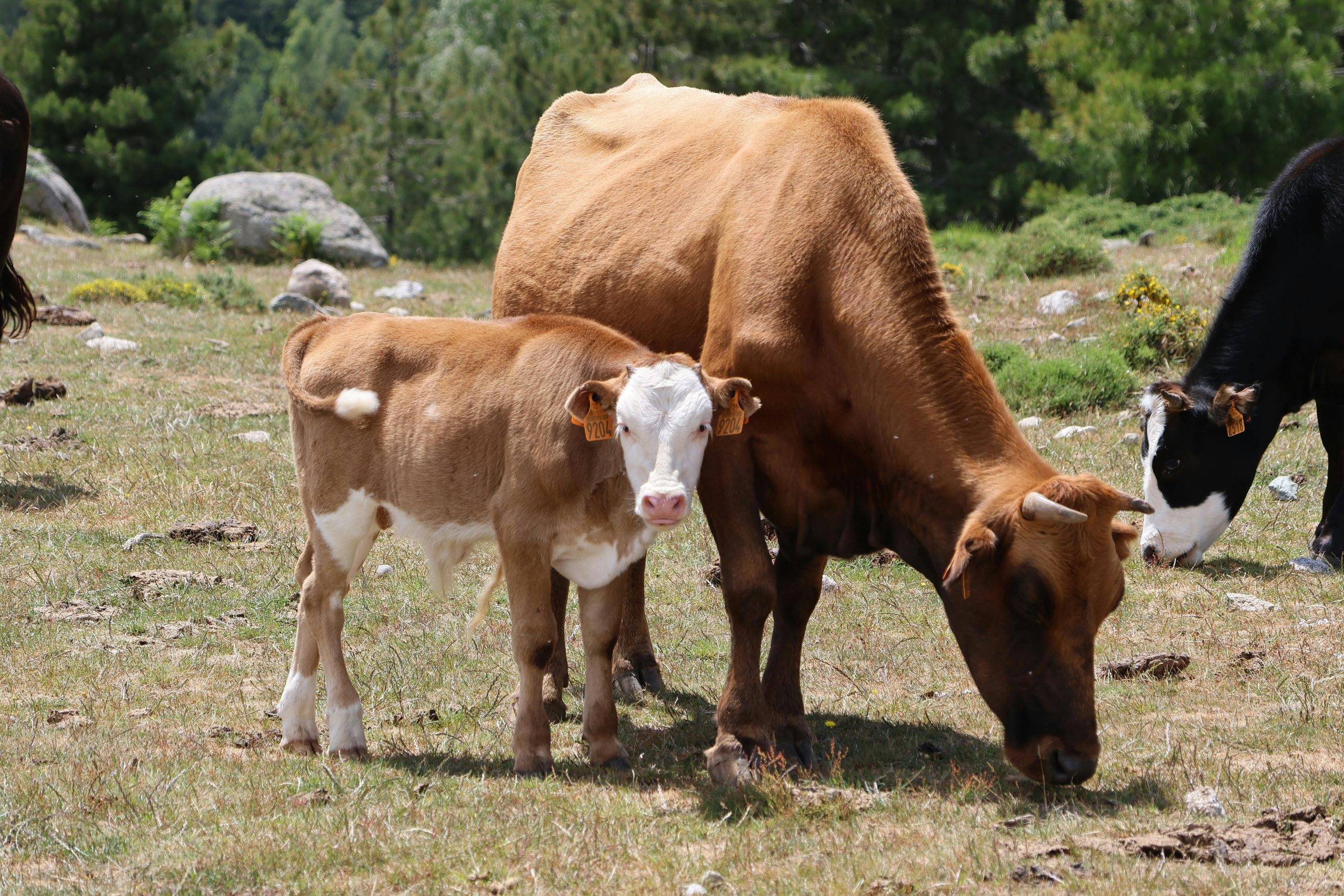Romulus and Remus Reborn Through Genetic Engineering

The first dire wolves to exist on Earth since the late Pleistocene epoch explore their carefully designed habitat within a secured 2,000-acre facility. Named Romulus, Remus, and Khaleesi, these animals represent a watershed achievement in genetic science—the successful resurrection of a species extinct for over 12,500 years.
Their birth through techniques developed by Colossal Biosciences transforms multiple scientific disciplines while establishing new frontiers in conservation biology. Beyond the headline achievement lies a methodological breakthrough with applications extending far beyond a single species.
Dire wolves (Canis dirus) dominated North American ecosystems from approximately 250,000 to 13,000 years ago. Fossil evidence indicates they were larger than modern gray wolves, with adults weighing between 150-175 pounds and possessing specialized adaptations for hunting Pleistocene megafauna.
The genetic restoration process began with extracting fragmented DNA from well-preserved specimens, primarily recovered from the La Brea Tar Pits in California. Unlike previous de-extinction attempts that focused on cloning, Colossal employed what they term "genetic restoration technology," which reconstructs an extinct species' gene sequence by gene sequence.
Dr. Jennifer Hayes, lead geneticist for the project, explains the methodology: "We identified crucial genetic markers that differentiated dire wolves from modern canids. Using computational modeling combined with CRISPR gene-editing technology, we modified gray wolf embryos to express these traits, creating genomes functionally equivalent to the original species."
The team focused on eight critical gene sequences determining unique dire wolf characteristics, including skeletal structure, metabolic pathways, and coat coloration. These modified embryos were carried by surrogate mothers, resulting in the birth of three healthy pups in late 2024.
Physical examinations confirm they display the characteristics documented in fossil records. Dr. Michael Torres, a veterinarian specialized in canid medicine, notes their development: "They exhibit the robust skeletal structure, broad cranial morphology, and muscle development consistent with paleontological records. Their white coat coloration was perhaps the most surprising confirmation of our genetic work."
This coat coloration represents a notable departure from fictional portrayals that popularized dire wolves in contemporary culture. Fossil evidence had suggested light-colored fur would provide optimal camouflage in the mixed grassland environments where dire wolves primarily hunted.
For paleontologists, access to living specimens transforms research previously limited to fossil evidence. Dr. Robert Manning, paleobiologist and advisor to the project, notes: "We're observing behaviors that could only be inferred from skeletal remains. This bridges a fundamental gap in our understanding of Pleistocene ecosystems."
The scientific significance extends beyond a single species to methodological breakthroughs in genetic restoration. The same techniques developed for dire wolf revival are being adapted to strengthen genetic diversity in critically endangered species, particularly the North American red wolf.
Ben Lamm, founder and CEO of Colossal Biosciences, emphasizes this application: "The technologies developed through this program provide unprecedented tools for preventing extinctions happening now. We're already implementing techniques from the dire wolf work to strengthen resilience in endangered populations."
The facility housing these animals maintains sophisticated monitoring systems that gather continuous behavioral and physiological data. Each observation fills gaps in scientific understanding previously limited to fossil evidence and phylogenetic inference.
Recent genetic research has revised scientific understanding of dire wolf evolution. Studies demonstrate dire wolves split from gray wolf ancestors approximately 5.7 million years ago—much earlier than previously thought. This makes them more distantly related to modern wolves than long assumed by paleontologists.
For conservation biology, the dire wolf program demonstrates a profound shift in possibilities. What once represented permanent biological loss may now, in carefully selected cases, be temporary. This reframes both scientific approaches and ethical responsibilities toward endangered species.
Dr. Sarah Thompson, bioethicist with the wildlife conservation community, notes this paradigm shift: "We're moving from conservation as preservation to conservation that includes restoration options. This introduces new ethical dimensions requiring careful consideration."
Colossal maintains that conservation science, not commercialization, drives their research. The company has established a scientific advisory board including ecologists, geneticists, and ethicists to guide responsible development of de-extinction technologies.
Public reaction to the achievement has been complex, with both fascination and concern expressed by conservation organizations and ethicists. The company maintains ongoing engagement with regulatory agencies and wildlife management authorities to establish appropriate frameworks for this emerging field.
For now, the world's only living dire wolves remain under careful observation in controlled settings. No plans exist for wildlife reintroduction, though genetic material has been preserved for potential future conservation applications. The primary focus remains studying these living specimens to bridge paleontological understanding with contemporary wildlife biology.




